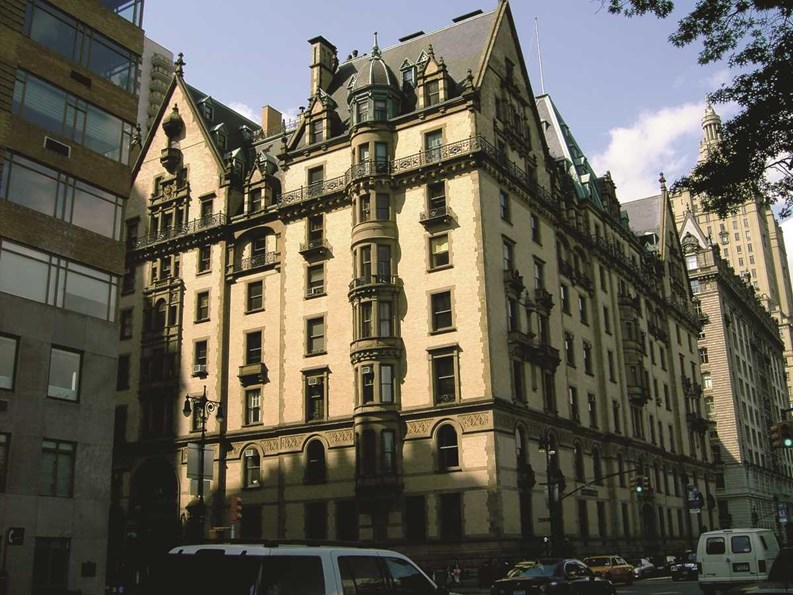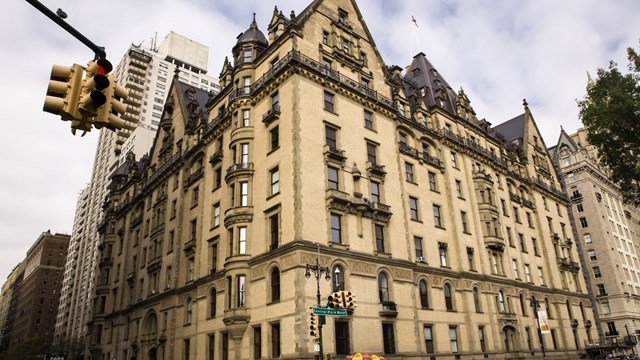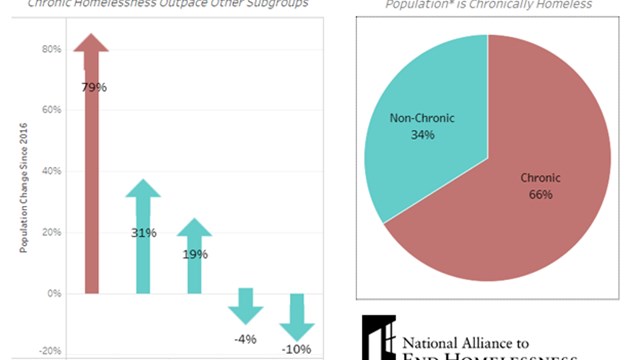The idea of cooperative living began in the 19th century in central and northern European countries, and came to America late in that century, sprouting in various forms in parts of New York City. For some residents here, it was a way that building tenants could band together and gain control over their quality of life, such as with the Finnish immigrants who created affordable housing for themselves through numerous buildings in Brooklyn in the first part of the 20th century.
Early on, the cooperative notion also had another, more exclusive side. Co-ops were a way for people to say who their neighbors would be, and a means by which they could keep out those they did not like, for whatever reason. Of course, one could also view such a system as just a way for people to live near those of the same ilk as themselves; to be close to those with whom they have the most in common.
Whether co-ops are seen as empowering and progressive or—as elitist and exclusionary— cooperative living helped build New York and America. Even so, the right to live around who you’d like to live around (while not guaranteed in the Constitution) seems to be a privilege enjoyed by the wealthy. Naturally, they exercise that right as anyone would, if given the chance. This is evidenced by the fact that the wealthiest people in the world are flocking to buy real estate here, especially luxury residences, a recent New York Times story reported.
“If you’re considering buying a residence in New York, you have to consider co-ops and condos,” says Carter B. Horsley, editorial director of CityRealty.com. “If you’re willing to accept a condo, you’ll have to accept an inferior location.”
Storied Histories
Still, a co-op is the type of community favored by folks in the city’s most prestigious addresses, and it appears this will be true for some time. The co-ops along Fifth and Park Avenues and Central Park West—those grand residential buildings have elegance and historical and architectural significance but they represent a lifestyle that is unique to New York, too. That style of living is so sought after that, even when the current real estate bubble bursts, those grand dame properties will remain unfazed and their high values intact. Not that it would matter since no one moves from those places, anyway. Or so it seems, to the uninitiated.
The tradition of co-ops here is long and varied. The Gramercy, at 34 Gramercy Park, was built in 1883. The Queen Anne-style, 9-story red brick building is said to be the first co-op in New York City, and was home to stars including James Cagney. It is the oldest continuously operating co-op in New York.
One of the best known of this group of elite multi-family residential co-ops is The Dakota. Almost as soon as it opened in 1884, the turreted building became impossible to live in because everyone wanted to be there. Word had caught on about the building in what was then a far-flung area of the city, and its 65 apartments quickly sold out.
While it might seem that such a prestigious address—it was home to John Lennon and where he was shot and killed, and is still home to many famous people—might be impossible to get an apartment in, that’s not quite right. There are a few apartments at The Dakota currently for sale, if you can afford them.
Similarly, 740 Park Avenue had two apartments available at the time of this story’s writing, but you will need either $29 million or $44 million to dwell in them. Built in 1929 by James T. Lee, grandfather of Jacqueline Kennedy Onassis, the building opened in 1930. The 19-story building’s values have skyrocketed over the years, and in recent years, an 18-room duplex there sold for $71 million.
Like 740 Park Avenue, 834 Fifth Avenue was designed by famed Sicilian-American architect Rosario Candela. It has a limestone façade and Art Deco details. Laurance Rockefeller bought the building in 1946 and converted it to co-ops. Several years ago, Rupert Murdoch paid $44 million for the apartment formerly owned by Rockefeller. In 2010, Charles Schwab bought his apartment there for $27 million.
The Beresford at 211 Central Park West is a luxury 23-story prewar apartment building that was one of the famous structures designed by architect Emery Roth, who designed The El Dorado, The San Remo, and The Ardsley, also. The El Dorado, at 300 Central Park West, is an Art Deco–style building that opened in 1931
The Century at 25 Central Park West, is a circa-1931 Art Deco building. The 29-story building was bought in 1982 by an investment group that wanted to turn it into a co-op and sell it back to the occupants. A legal battle ensued between the two sides, ultimately leading to an agreement in which 229 units of the 410 units were sold to the renters, at less than market prices. Some apartments there now are valued at more than $20 million.
While the group of aforementioned buildings is comprised of prewar structures, 740 Park Avenue was among the older structures (including 960 Fifth Avenue and 998 Fifth Avenue and others) that were converted from rental to co-ops in the 1950s and 1960s. The conversion really made sense for these residences, since they were originally laid out for the wealthy.
“Ninety-five percent of the prominent buildings have a layout that includes maid’s quarters,” says Jeremy Swillinger, a licensed real estate salesperson for Manhattan brokerage firm, Level Group.
Middle-class and lower income co-ops sprung up in the outer boroughs too. Sunset Park in Brooklyn is where Finns built about 25 cooperative housing complexes. The first Finnish-built co-ops in Sunset Park, named Alku I (Beginning I) and Alku Toinen (Beginning II), date back to 1916 and are the oldest nonprofit co-ops in New York City.
There are also many labor cooperatives established that provided housing for their workers. A union leader in the early 1900s, Abraham Kazan is known as the father of cooperative housing in New York City. The Amalgamated Housing Cooperative, an apartment building in the Bronx, was built between 1927 and 1930. He founded the development, presided over it for 40 years, managed it for 30 years, and lived there until he died. Other co-op developments sponsored by trade union organizations also sprung up, namely the Hillman Houses, the East River Houses and Seward Park Housing.
The Other Half’s Lives
The most exclusive co-ops, with gloved doormen, spacious public dining-rooms and other amenities, are hard to elevate yourself to, unless you’ve done extremely well. Even then, these buildings’ boards know if you are one of them or not.
“In a co-op, the board has to know who you are… For some of them, you have to be worth at least $100 million,” Horsley says. “The best buildings in the city are co-ops.”
You may be rich and you may be famous but even so, you may not be for the boards of such residences. The “Material Girl” learned this real estate lesson the hard way. In 1985, 26-year-old pop star Madonna was rejected by the San Remo Tenants Corp. from buying a $1.2 million, 12-room apartment at the San Remo. The board gave no reason for the decision, but a newspaper article mentioned one: “The woman selling the apartment, and the agent hoping to engineer the sale, hinted Thursday that Madonna’s image may have put off board members.”
Be it 740 Park Avenue or 998 Fifth Avenue, or one of the other, rarefied properties so sought after, people want in not just because of their architectural style and significance, or because of their spacious apartments and amenities, or their location (all of which are, of course, important), but most of all, because of their exclusivity.
“It’s like joining a private country club—from the financial aspect to the social aspect; the board wants to know who you are. [Prospective buyers] have to give references, personal and business contacts, tax records, and [reveal] their portfolio,” Swillinger says. “Those who live there are the 1 percent of the 1 percent.”
In addition to personal and business references from friends in the neighborhood, boards of such exclusive residences expect a buyer to disclose tax returns and other assets, including real estate assets they own. Some boards require that the would-be buyer have two times or three times the apartment purchase price (or more) in liquid assets.
Additionally, there is a personal interview any buyer must perform with the board. Even with all of the other requirements nailed down and with a stellar interview, however, a buyer might not be approved. Sometimes, there are kinfolk to be considered by the board, too. We are talking about the four-legged kin.
It is not unheard of for some boards to actually interview the prospective owner’s dog or cat before allowing the buyer to own the apartment (or before rejecting them).
But who can predict how his cat, or his dog will act on the day he has to behave for the co-op board? The prospective owner had better be able to predict that the canine or feline will be well-mannered, or they both could lose their chance to live in one of America’s most prestigious addresses.
Some breeds, however refined and urbane the individual dog, may just be seen by some boards as poochie non grata. Rottweilers are one breed that is said to not be wanted in certain residences.
Other requirements to be a shareholder might appear excessive to an outsider, rather than being the person on pins and needles hoping to be OK’d by the board. The requirements might even seem intrusive.
“There are some boards that ask for a criminal background check; some ask for a specific outside agency to check out who you are, going 10 to 15 years back,” says Jacky Teplitzky, a top broker with Douglas Elliman Real Estate. “In recent years, we have had a huge problem with trusts. Most of these boards will not allow you to buy the apartment as a trust. They do not want anybody automatically getting the apartment because someone passed away.”
And they don’t want anyone automatically getting an apartment because of some sort of artistic kismet that would make a good headline, like: “Diva sells apartment to younger diva.”
So when Barbara Streisand’s penthouse at The Ardsley went up for sale in 1999, Mariah Carey wanted to buy the apartment. But despite her fame (or because of it), Carey was rejected by the building’s board. Since each prospective buyer in a co-op is vying to become a shareholder, the board can accept or reject them and not give a reason why.
It is a seemingly ironic process, since these apartments are publicly offered and even offered for sale internationally, and after all, must be sold to someone. Yet the decision on whether or not to accept a prospective owner, and why the decision was made, is closely guarded and private.
These boards are reluctant to let just anyone in, even for a showing of the apartment. In many of these buildings, showing an apartment must occur during business hours; often, escorts are needed to accompany guests to and from the apartment. Some building boards require showings to be by appointment only.
There is actually a lot at stake, including the reputation of the landmark, the value of the property, and the peace and comfort of the residents. With astronomical monthly maintenance payments in these buildings, the shareholders can afford to be picky about who they choose to have as a neighbor, as well as how they want to run their building. A 2-bedroom, 1,800-square-foot apartment in one of these landmarks (such as The Dakota) could have a monthly maintenance fee of $6,700. Or at 740 Park Avenue, a 5-bedroom apartment might have a monthly fee of $10,000, Swillinger says.
While ownership preferences and new development are shifting to condos, partly because using such a property as an asset on which to speculate and sell later for a profit is smart, and also since all of the new state-of-the-art condos available make it easy to do so. Still, the types of buyers who are looking for the old school, upper crust co-ops are the ones who’ve always wanted them; folks from the same set as those who live in the venerable old buildings.
“There is a niche of younger folks that want to be in the prestigious Upper East Side buildings. A lot of them want to move to where their families still live,” Swillinger says, adding that very high net worth individuals always want to live in such residences.
Teplitzky distinguished between the buildings that are more social and whose boards put a lot of emphasis on a buyer’s pedigree and who the buyer knows, versus other buildings, where the transaction is about the money. Clearly, both forces are moving the market.
“These buildings are extremely difficult to get in. They are like a private country club. The problem is, you can be a billionaire and not necessarily be accepted by a board,” Teplitzky says.
With admission to that club, comes adherence to its rules. Many of these buildings have summer work rules, whereby renovations that are not emergencies must be done only in the summer. Many of these buildings also require that 80 percent of the apartment must be carpeted. Others have limitations on the number of pets a resident can have, and restrictions on the weight of the pet, as well as requirements that pets must enter and exit the building via the freight elevator.
While the residents (and therefore the boards) of such buildings would seem to be naturally conservative types, the financial crisis of 2008-2009 made many of them even more conservative. Cases like Madonna and Mariah Carey are the reactions of conservativism, since the people who live in these buildings don’t want the added attention that such celebrities invariably bring to their neighbors’ lifestyles. Change may be coming, though, wrought by market forces beyond the control of any board.
“The new generation of buyers, in their 40s, is looking for other amenities, like gyms and children’s rooms. Some of these traditional co-op buildings are still old buildings—they are trying to convert some basement spaces into gyms,” Teplitzky says. “I think that eventually they will need to be a little looser on their rules, because all the new pricier buildings are condos. People want to have the ability to sell a saleable asset.”
Jonathan Barnes is a freelance writer and a frequent contributor to The Cooperator.







Leave a Comment